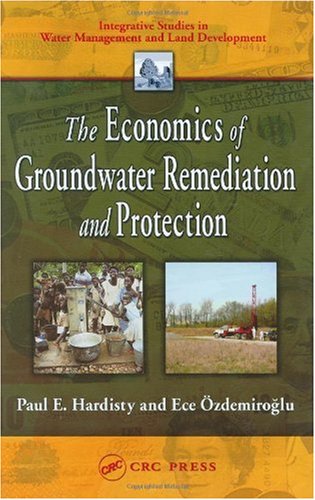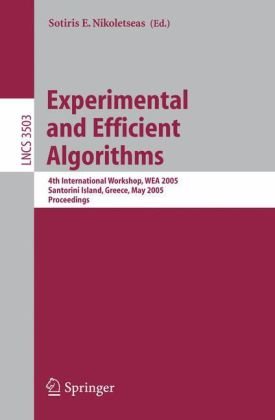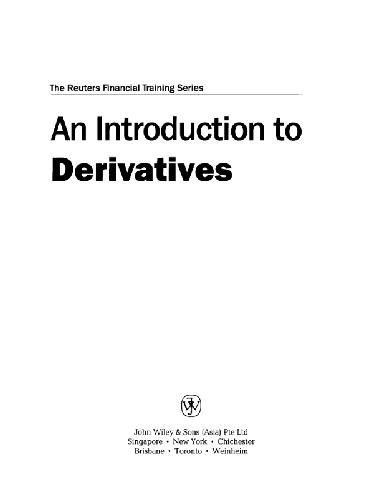Paul E. Hardisty, Ece Ozdemiroglu1566706432, 9781566706438
Table of contents :
Front cover……Page 1
Series statement: Integrative studies in water management and land development……Page 8
Foreword by series editor: out of sight but not out of mind……Page 10
Preface……Page 12
Acknowledgments……Page 14
Authors……Page 16
Table of Contents……Page 18
Introduction……Page 28
1.2 Water……Page 30
1.3 Groundwater in Context……Page 34
1.4 Sustainability, Optimality, and Intervention……Page 35
1.5 Organization of the Book……Page 36
References……Page 38
2.1 A Nontechnical Introduction to Groundwater Contamination……Page 40
2.2 The Regulatory Perspective……Page 45
2.2.1.1 Superfund……Page 46
2.2.1.3 Enforcement……Page 47
2.2.1.4 Groundwater Protection and Remediation……Page 48
2.2.2.1 Groundwater and CBA……Page 49
2.2.2.2 Brownfield Redevelopment……Page 50
References……Page 52
3.2.1 Context……Page 54
3.2.2 Sources of Contamination……Page 55
3.2.3 Differing Stakeholder Perspectives: Industry, Government, and Society……Page 58
3.3.1 Soils, Rock, Geologic Structure……Page 59
3.3.2 The Hydrologic Cycle……Page 60
3.3.3.1 Groundwater Hydrology……Page 63
3.3.3.2 Contaminant Hydrogeology……Page 65
3.3.3.3 Nonaqueous Phase Liquids (NAPLs) in the Subsurface……Page 69
3.4.1 Background……Page 76
3.4.2 Source, Pathway, and Receptor Concept……Page 77
3.4.3.4 Toxicological Assessment……Page 78
3.4.3.5 Risk Quantification……Page 80
3.5.1 A Rational Approach to Groundwater Contamination……Page 81
3.5.2.1 History and Trends……Page 82
3.5.2.3 Remedial Technology Selection……Page 83
3.5.2.4 Advancements in Remedial Technologies……Page 84
3.5.3 Example – In Situ Remediation of Hydrocarbons Using Soil Vapor Extraction……Page 86
3.5.4 Example – Horizontal Wells for Groundwater Remediation……Page 87
References……Page 89
4.1 Economic Value of Groundwater – Basic Concepts……Page 92
4.1.1 Total Economic Value……Page 93
4.1.2 Measuring Total Economic Value……Page 94
4.1.2.1 Actual Market Value……Page 96
4.1.2.2 Market Price Proxies……Page 97
4.1.2.3 Surrogate Market Techniques……Page 98
4.1.2.4 Hypothetical Market Techniques……Page 99
4.1.2.5 Using Economic Value Estimates-Benefits Transfer……Page 100
4.1.3.2 Cost-Effectiveness Analysis……Page 105
4.1.3.3 Multicriteria Analysis……Page 106
4.2.1 Studies Using Actual Market Value Techniques……Page 107
4.2.3 Studies Using Hypothetical Market Value Techniques……Page 108
4.2.4 Summary……Page 112
References……Page 114
Applying Economics to Groundwater……Page 116
5.1 Project Implementation Framework and Economic Analysis……Page 118
5.2 Cost-Benefit Analysis……Page 121
5.2.1 Definition of Costs and Benefits……Page 123
5.2.2 Costs and Benefits over Time……Page 124
5.2.3 Comparing Costs and Benefits……Page 126
5.2.4.1 Risk……Page 129
5.2.4.2 Uncertainty……Page 130
5.3.1 Financial vs. Economic Analysis……Page 132
5.3.2.1 Philosophy and Content……Page 134
5.4 Cost-Effectiveness Analysis……Page 135
5.5 Other Appraisal Approaches……Page 136
References……Page 139
6.2 Remedial Objectives, Approaches, and Technologies……Page 140
6.3.1 Risk……Page 141
6.3.2 Uncertainty and Multiple Risk Linkages……Page 142
6.4.1 Groundwater Flows……Page 144
6.4.2 Scale of Groundwater Issues……Page 145
6.5 Groundwater Quality and Quantity……Page 146
6.6.2 Example: NAPLs in Fractured Aquifers……Page 147
References……Page 149
7.1 Conceptual Frameworks for Benefits Assessment……Page 152
7.2.1 Benefits – Prevention Only……Page 156
7.2.2 Benefits – Prevention and Remediation……Page 158
7.2.3 Net Benefits……Page 159
7.2.4 Discounting……Page 161
7.3.1 Monitoring……Page 163
7.3.2 Benefits with Uncertainty – Expected Utility……Page 164
References……Page 166
8.1.1 Semantics……Page 168
8.1.2 Communication between Disciplines……Page 169
8.1.3 Literature Review – Costs of Groundwater Remediation……Page 170
8.1.4 Private Costs of Remediation……Page 171
8.2.1 Overview……Page 172
8.2.2 Net Benefits and External Costs……Page 173
8.2.2.1 Planned External Costs……Page 174
8.2.2.2 Example: External Costs of Transport to Landfill……Page 175
8.2.2.3 Unplanned External Costs……Page 179
8.2.2.4 Example: Accidental Piercing of Basal Containment Layer……Page 180
8.2.3 Pollution Liability Insurance……Page 182
References……Page 183
9.1 Private (Internal) Benefits……Page 184
9.2 Public (External) Benefits……Page 186
9.3 Example – Property Value Increase as a Result of Remediation……Page 188
9.4 Time……Page 189
9.5 Education……Page 190
References……Page 191
Remedial Decision Making……Page 192
10.1.1 Policy Objective Level……Page 194
10.1.2 Remedial Objective Level……Page 195
10.1.3 Remedial Approach Level……Page 197
10.2.1 Requirements……Page 198
10.2.2 Framework Overview……Page 200
11.2 Step A1: Screen Objectives – Develop Short-List……Page 202
11.2.1 Step A1-1: Identification of a Clear Remedial Objective or Objectives……Page 204
11.2.2 Step A1-2: Identification of a Mandated Remedial Objective……Page 205
11.2.4 Step A1-4: Preliminary Constraints Analysis……Page 206
Reference……Page 207
12.2.2 Step A2-2: Identify Clear or Mandated Approaches……Page 208
12.2.4 Step A2-4: Identify and Apply Constraints……Page 209
12.2.6 Step A2-6: Determine Relationships between Multiple Objectives……Page 210
12.3 Step B1: Assess High-Level Benefits Function for Each Objective/Approach……Page 211
12.3.2 Step B1-2: List Possible Benefits for Each Objective/Approach……Page 212
12.3.3 Step B1-3: Identify and Value Readily Quantifiable Benefits……Page 214
12.3.4 Step B1-4: Develop Threshold Benefit-Time Function……Page 215
12.3.6 Step B1-6: Apply Nonquantified Benefits……Page 217
12.4.1 Step B2-1: Select Likely Least-Cost Technology to Achieve Approach……Page 218
12.4.3 Step B2-3: Qualify Probability of Success of Each Approach……Page 219
12.5 Step B3: Determine Economically Optimal Approach for Each Objective……Page 220
12.7 Step D: Technology Selection Process……Page 222
12.7.3 Step D3: Develop Technology Life-Cycle Cost Curves……Page 223
12.7.4 Step D4: Evaluation of Alternatives……Page 224
12.8 Discussion……Page 226
References……Page 227
Case Studies……Page 228
13.1.1 Site Description……Page 230
13.1.2.4 Middle Permian Marl……Page 231
13.1.3.2 Sherwood Sandstone……Page 232
13.1.3.4 Hydrology……Page 233
13.3.1 Preliminary Qualitative Risk Assessment……Page 234
13.3.1.3 Model Results……Page 235
13.3.1.4 Vapor Modeling – Aqueous Phase Partitioning……Page 236
13.4.1.1 Clear, Mandated, or Unacceptable Objectives……Page 237
13.4.2 Step A2 – Determine Approach Short-List for Each Objective……Page 241
13.4.2.2 Develop Short-List of Remedial Approaches……Page 242
13.4.2.3 Relationships among Multiple Objectives……Page 246
13.4.3.2 Possible Benefits of Each Objective/Approach……Page 252
13.4.3.3 Identify and Assess Quantifiable Benefits……Page 258
13.4.3.4 Develop Threshold Benefit-Time Function……Page 259
13.4.3.5 Identify and Assess Nonquantifiable Benefits……Page 260
13.4.3.6 Apply Nonquantified Benefits……Page 261
13.4.5 Step B3 – Determine Economically Optimal Approach for Each Objective……Page 262
13.4.6 Step C – Conduct High-Level CBA……Page 264
13.5 Sensitivity Analysis……Page 272
13.5.1 Discount Rate……Page 273
13.5.2 Timing of Remediation……Page 274
13.5.3 Value of Groundwater……Page 277
13.5.4 Mobile Plume Scenario……Page 279
13.6 Uncertainty and Limitations……Page 280
13.7.3.1 Model Code……Page 282
13.7.3.2 Model Parameters……Page 283
13.7.4.1 Model Representation of Hybrid Site……Page 284
13.7.4.2 Additional Off-Site Source (Run 2)……Page 285
13.7.4.5 Reduced Vertical Hydraulic Conductivity of Sandstone (Run 9)……Page 286
13.7.4.6 PWS Well Close to Site (Run 10)……Page 288
13.7.4.7 Volume of Aquifer Rendered Unfit for Drinking- Water Abstraction (Runs 11, 16, and 17)……Page 289
13.7.4.10 Shallow Source Removal and Source Reduction in Sandstone (Runs 13 and 14)……Page 290
References……Page 291
14.2 Benefits of Remediation – Avoidance of Expected Damages……Page 292
14.3 Remedial Approach Analysis……Page 293
14.4 Cost-Benefit Analysis……Page 294
14.5 Summary – Decision Making……Page 295
15.1.1.2 Hydrogeology……Page 296
15.2.1 Health Effects from Tritium Exposure……Page 297
15.3.1 Method……Page 298
15.3.3 Short-List of Remedial Approaches……Page 299
15.4.1 Context……Page 302
15.4.3 Possible Benefits of Each Approach……Page 303
15.4.4 Identification and Valuation of Readily Quantifiable Benefits……Page 305
15.4.5 Identify and Assess Nonquantifiable Benefits……Page 306
15.4.6 Benefits Summary……Page 307
15.5 Cost Analysis……Page 308
15.5.2 Approach S1P – Partial Source Removal (Site Landfill)……Page 309
15.5.3.2 Treatment System……Page 310
15.5.5 Approach P2PR – Experimental Research Approach……Page 311
15.6.1 Results……Page 312
15.6.2 Discussion……Page 315
15.6.3.1 Discount Rate……Page 317
15.6.3.2 Timing of Remediation……Page 318
15.6.3.4 Results……Page 319
15.7 Uncertainty and Limitations……Page 321
15.8 Summary……Page 322
Reference……Page 323
16.2.1 Setting and History……Page 324
16.2.3 Risk Assessment (Base Case)……Page 325
16.3.1 The Problem……Page 326
16.3.2 Indicative Remedial Costs……Page 327
16.3.3 Indicative Benefit Estimates……Page 328
16.4 Solution……Page 329
Summary and Conclusions……Page 336
17.1.1 Groundwater Resources in Context……Page 338
17.1.3 Risks from Groundwater Contamination……Page 339
17.1.4 Groundwater Remediation……Page 340
17.1.5 The Economic Value of Groundwater……Page 342
17.1.6 Economic Analysis of Groundwater Remediation……Page 344
17.1.7 Remedial Costs……Page 345
17.1.8 Remedial Benefits……Page 346
17.1.9 Using Cost-Benefit Analysis for Remedial Decision Making……Page 347
17.2.3 Effect of Discount Rate……Page 348
17.2.5 Further Research on the Economic Value of Aquifers……Page 349
17.2.6 Use and Limitations……Page 350
Glossary of Economic Terms……Page 352
B……Page 354
C……Page 355
E……Page 356
G……Page 357
L……Page 358
N……Page 359
P……Page 360
S……Page 361
U……Page 362
Y……Page 363







Reviews
There are no reviews yet.